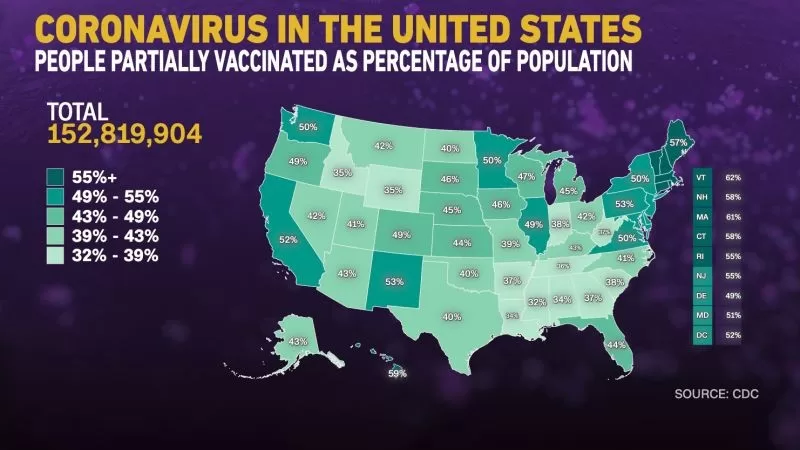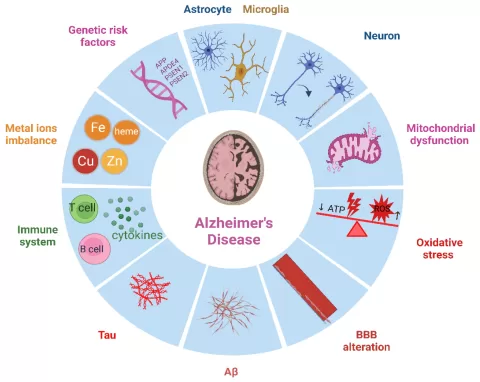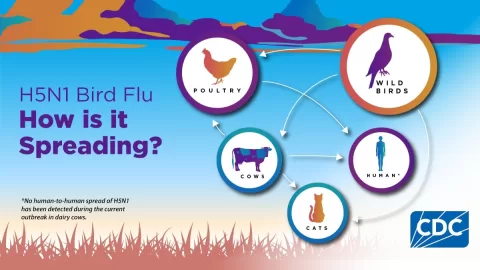California vaccination rates are experiencing a troubling decline, particularly against measles, amidst a significant outbreak threatening public health. With immunity thresholds required to achieve herd immunity now slipping below the necessary 95%, experts warn that this drop raises the risk of childhood diseases previously under control. The current downward trend in childhood immunization rates has ignited vaccine skepticism among some parents, who question the safety and necessity of vaccines like the MMR vaccine. These concerns come at a critical time when the resurgence of preventable diseases, such as measles, poses new threats to community health and safety. Thus, addressing misconceptions and rebuilding trust in vaccination programs is more crucial than ever to safeguard children and prevent outbreaks.
The issue of vaccination adherence in California schools has become increasingly pressing as recent statistics reveal a decline in immunization compliance among young children. As communities grapple with the repercussions of falling immunization rates, terms like ‘childhood shots’ and ‘preventive healthcare’ are frequently mentioned alongside discussions about herd immunity. Amidst rising skepticism surrounding vaccine efficacy, particularly against diseases like measles, the dialogue around childhood vaccinations has taken a complex turn. Addressing these vaccination challenges is essential to ensure comprehensive protection against highly contagious diseases and curtail any potential outbreaks that could threaten public health. As the state navigates these critical health conversations, fostering a better understanding of the importance of living in a vaccinated community becomes imperative.
The Alarming Trend of Falling Vaccination Rates in California
As the measles outbreak in California continues to expand, a concerning trend has emerged: childhood vaccination rates have dropped significantly below the 95% threshold necessary for herd immunity. According to data from the California Department of Public Health, 16 counties have now fallen below this critical benchmark, indicating that a substantial number of children are unprotected against this highly contagious disease. The decline in the vaccination rates among kindergartners and transitional kindergartners has raised alarms, particularly as new cases of measles are reported from neighboring states where the outbreak is far worse, thus highlighting the urgency for heightened public health measures.
Many experts attribute this decline to the rising vaccine skepticism fueled by misinformation campaigns and pandemic-related distrust in public health institutions. Parents who once adhered to the regimen of childhood immunizations are now expressing doubts, resulting in lower enrollment in vaccination programs. This troubling phenomenon not only jeopardizes the health of individual children but also creates potential risk factors for community outbreaks, as those unable to receive vaccinations for medical reasons rely on herd immunity to protect them.
Understanding Herd Immunity and Its Importance
Herd immunity refers to the collective protection of a community against an infectious disease when a critical portion of the population is vaccinated, preventing it from spreading easily. In the context of measles, achieving herd immunity is especially vital due to the virus’s highly infectious nature; it can be contracted through air transmission after an infected person has left a space. With current vaccination rates lagging in various areas of California, health officials are raising concerns about the implications for children’s health and public safety. Without enough vaccinated individuals, the risk of a widespread outbreak escalates.
Maintaining herd immunity not only protects the vaccinated but also safeguards those who cannot receive vaccinations for health reasons, fostering a communal responsibility towards public health. Children with weakened immune systems or allergies face heightened risks during outbreaks; thus, their safety depends on the collective compliance of the surrounding population. By understanding and accepting vaccines like the MMR (measles, mumps, and rubella) vaccine, communities can work together to halt the resurgence of preventable diseases.
The Impact of Vaccine Skepticism on Public Health
Vaccine skepticism has become a significant barrier to achieving necessary vaccination rates and, consequently, an impediment to public health efforts. The COVID-19 pandemic has intensified distrust in health officials, leading many parents to question not only the efficacy of vaccines but also the integrity of the entire health system. Misinformation spread through social media and other platforms has fueled fears about vaccine safety, diminishing parents’ willingness to immunize their children against diseases once considered eradicated in the U.S., such as measles.
This skepticism hampers vaccination campaigns and poses challenges for healthcare professionals tasked with educating hesitant parents. As seen in the trends of vaccination rates in charter schools compared to traditional public schools, a lack of trust can directly affect a child’s ability to access important vaccinations. Increasing dialogue with parents, acknowledging their concerns, and providing transparent information about vaccines are crucial steps to rebuild that trust and enhance overall public health efforts.
Rebuilding Trust in Vaccines Through Education
Given the deep-rooted concerns surrounding vaccines, health experts emphasize the importance of education as a tool to rebuild parental trust. School vaccination clinics must prioritize open communication, allowing parents to express their fears and receive answers in a non-confrontational manner. By offering evidence-based information about the efficacy and safety of vaccines, health officials can help dismantle the unfounded fears that have emerged as a result of pandemic-related misinformation.
Educational campaigns tailored specifically for communities with lower vaccination rates can also play a pivotal role. By addressing common misconceptions and providing clear, factual data about the benefits of vaccination, community leaders can empower parents to make informed decisions. This proactive approach not only eases anxiety surrounding vaccination but also encourages greater participation in immunization programs, ultimately protecting children and ensuring community health.
The Role of Schools in Promoting Vaccination
Schools serve as critical environments for promoting vaccination awareness and access, playing a vital role in community public health. As parents often look to educators and healthcare providers for guidance, schools can implement policies that stress the importance of vaccinations, reminding families of their essential role in preventing outbreaks. Engaging discussions during orientations and health fairs can facilitate greater understanding and acceptance of vaccines, helping dispel myths and providing an environment of reassurance.
Furthermore, collaboration between schools and local health departments can enhance vaccination drives by offering on-site immunization events. Such initiatives make it easier for families to vaccinate their children, ensuring accessibility and reducing barriers. By fostering partnerships that prioritize public health education, schools can empower parents to make informed choices, ensuring that vulnerable populations are protected from outbreaks of infectious diseases.
Navigating the Challenges of Vaccine Mandates
With the ongoing challenges posed by vaccine skepticism, the implementation of vaccine mandates in schools has become a contentious issue. While mandates can help significantly boost childhood vaccination rates, they also face resistance from families who believe in their right to choose whether to immunize their children. Balancing public health needs with individual rights necessitates carefully crafted policies that consider parent input while promoting the intrinsic benefits of immunizations for overall community health.
Moreover, schools, especially charter institutions, often encounter unique hurdles in enforcing these mandates due to regulatory complexities. It’s essential to clearly communicate the importance of vaccinations and the rationale behind such mandates, ensuring that parents understand how immunizations contribute to the collective safety of their children and classmates. By establishing dialogue and addressing concerns proactively, schools can foster compliance while respecting individual perspectives.
The Consequences of Low Immunization Rates
The ramifications of dipping vaccination rates in California extend beyond mere statistics; they pose real threats to public health, as historical data shows a direct correlation between low immunization rates and the resurgence of preventable diseases. The decline in measles vaccination rates, for instance, places communities at increased risk of an outbreak, which may result in substantial healthcare costs, increased hospitalizations, and a loss of trust in the healthcare system. These consequences can create a cycle of fear that further perpetuates skepticism about vaccinations.
In addition, outbreaks of diseases like whooping cough or measles can lead to significant interruptions in childcare and school environments, causing chaos for families and disrupting the lives of children. Recognizing that high immunization rates not only protect individuals but also sustain public health is essential in fostering community accountability and promoting greater vaccination compliance.
The Critical Role of Health Experts in Combating Misinformation
Experts in public health are at the front lines of combating vaccine misinformation, striving to provide accurate and reliable information about the importance of vaccinations amid rising skepticism. By deploying evidence-based guidelines and engaging with communities, health professionals can help mitigate fears around vaccines while emphasizing their safety and effectiveness. As trusted sources, these experts serve a critical role in addressing the pervasive misinformation that can lead to significant health risks.
Efforts to deliver clear, concise messaging about the measles vaccine, the benefits of herd immunity, and the significance of vaccinations for childhood diseases are vital in rebuilding public confidence. Initiatives that involve community leaders and respected figures can further enhance outreach, creating a more compelling case for vaccination through familiar and trusted voices.
Future Outlook: Ensuring Safe Environments for Children
As California faces the consequences of declining vaccination rates against one of the world’s most infectious diseases, ensuring safe environments for children becomes paramount. Stakeholders, including parents, educators, and healthcare providers, must work collaboratively to promote the understanding that vaccinations are essential for protecting not only individual children but also vulnerable populations who cannot receive vaccines due to health issues. Engaging with families and recognizing their concerns creates pathways for dialogue that can shift perceptions.
Moreover, ongoing monitoring of immunization rates and the swift response to emerging outbreaks is crucial in maintaining public health stability. Public health campaigns advocating for vaccinations before school entrance and comprehensive educational programs can foster a better understanding of the true risks of vaccine-preventable diseases, thus safeguarding future generations against outbreaks.
Frequently Asked Questions
What are the current California vaccination rates against measles amid the outbreak?
California’s vaccination rates against measles have fallen to concerning levels, with 16 counties reporting rates below the herd immunity threshold of 95%. In the 2023-24 school year, only 96.2% of kindergartners received the MMR vaccine, a slight decline from the previous year.
How does herd immunity relate to childhood vaccination rates in California?
Herd immunity is crucial for preventing the spread of diseases like measles. In California, declining childhood vaccination rates mean that many counties have fallen below the necessary 95% vaccine coverage, increasing the risk of outbreaks.
What impact does vaccine skepticism have on California’s MMR vaccine rates?
Rising vaccine skepticism in California, particularly influenced by concerns post-pandemic, has significantly impacted MMR vaccine rates. Parents expressing doubt about vaccine safety have contributed to the decrease in vaccination among kindergartners.
Are charter schools in California experiencing lower vaccination rates compared to public schools?
Yes, charter schools in California have reported significantly lower vaccination rates for the MMR vaccine, averaging around 76.41%, compared to 92.07% in traditional public schools. This discrepancy raises concerns about herd immunity and community health.
What are the dangers of low measles vaccination rates in California?
Low measles vaccination rates in California pose a risk of resurgence of the disease, which is highly contagious and can lead to severe health complications. The state’s decline in childhood immunization puts vulnerable populations at increased risk.
What strategies are being implemented to combat falling vaccination rates in California?
To address declining vaccination rates, health professionals and school nurses are engaging with parents, employing communication and trust-building strategies to mitigate vaccine skepticism and emphasize the importance of the MMR vaccine.
How are the California vaccination rates affecting herd immunity against measles?
California vaccination rates are critical for maintaining herd immunity against measles. With 16 counties now below the 95% threshold, the community’s immunity is weakened, which could lead to increased transmission of the disease.
What is the role of public health messaging in improving California vaccination rates?
Effective public health messaging is key to improving California vaccination rates. Clear communication about vaccine safety, efficacy, and the risks associated with low measles vaccination rates is essential to counteract vaccine skepticism.
What are the potential health consequences of a measles outbreak in California?
A measles outbreak in California could lead to severe health consequences, including complications such as pneumonia, encephalitis, and even death in some cases. Maintaining high vaccination rates is vital to preventing such outbreaks.
Why is it important to address vaccine skepticism in California?
Addressing vaccine skepticism is critical in California to ensure high childhood immunization rates against diseases like measles. By restoring trust, public health officials hope to enhance vaccination rates and protect community health.
| Key Point | Details |
|---|---|
| Vaccination Rates Decline | California’s measles vaccination rates are decreasing; 16 counties below 95% herd immunity. |
| Vaccine Skepticism | Post-pandemic distrust in public health has raised skepticism about vaccines, affecting parents’ willingness to vaccinate. |
| Importance of Herd Immunity | Maintaining herd immunity is crucial to prevent the spread of measles, especially among vulnerable populations. |
| Distrust in Public Health | Many parents question the safety and efficacy of vaccines due to past public health messaging failures. |
| County Variability | Immunization rates vary greatly in California; Northern counties generally report lower rates than Southern counterparts. |
| Charter Schools vs Public Schools | Charter schools have lower vaccination rates compared to traditional public schools due to stricter enrollment laws. |
| Future Risks | Declining vaccination rates pose a risk for outbreaks of preventable diseases like measles and whooping cough. |
Summary
California vaccination rates are witnessing a troubling decline, leading to grave concerns about the resurgence of contagious diseases like measles. With 16 counties reported to be below the critical herd immunity threshold, it is evident that rising vaccine skepticism—exacerbated by the COVID-19 pandemic—poses a significant public health challenge. Urgent action is needed to restore public trust in immunizations and ensure that all children are protected against preventable diseases.
The content provided on this blog (e.g., symptom descriptions, health tips, or general advice) is for informational purposes only and is not a substitute for professional medical advice, diagnosis, or treatment. Always seek the guidance of your physician or other qualified healthcare provider with any questions you may have regarding a medical condition. Never disregard professional medical advice or delay seeking it because of something you have read on this website. If you believe you may have a medical emergency, call your doctor or emergency services immediately. Reliance on any information provided by this blog is solely at your own risk.








